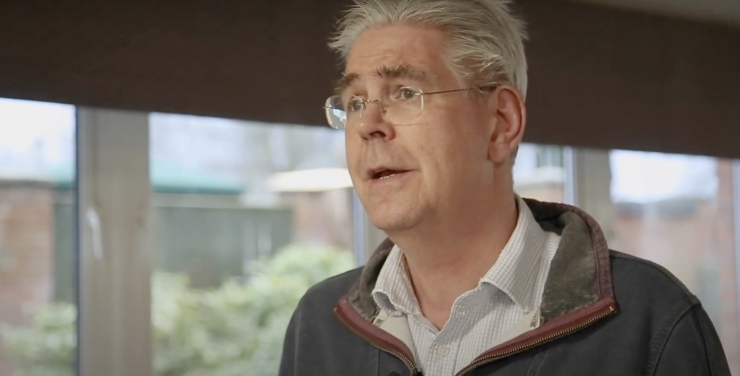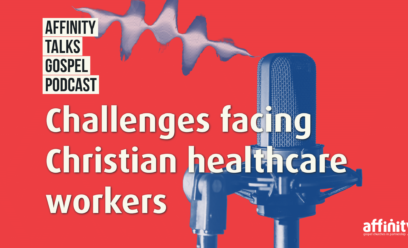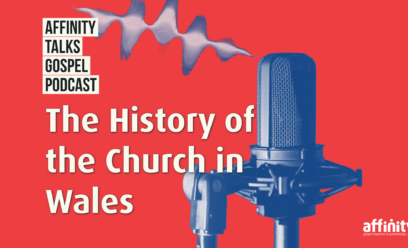Key Issues Highlighted for Conservative Evangelicals by the COVID Crisis – Part One

At their meeting last week the Affinity Advisory Council had a discussion about the ways in which the Covid pandemic has affected our churches over the past eighteen months, and how we are going to address the ongoing challenges and opportunities into the future.
By way of introduction to our conversation, and to set the scene, John Stevens, National Director of FIEC, was asked to present a paper. We are publishing it here in three parts to share it with a wider audience.
In this first part, John considers the question of ecclesiology – then nature of the church and how it is led and organised:
After COVID – Key Issues Highlighted for Conservative Evangelicals by the COVID Crisis
Graham has asked me to provide some brief reflections on the COVID crisis to help stimulate our discussion. The COVID crisis has been a hugely testing time for churches, presenting unprecedented challenges to churches and leaders. It required rapid reaction to a fast-moving situation involving a new disease and government interference in the life of churches and Christians. It caused division within congregations, between churches, and between denominations as people took a variety of approaches. General theological principles had to be applied to a unique context, for which there was no exact parallel either in the Bible or in church history. Sharp disagreements occurred, which fractured alliances and unity, and it remains to be seen if these will have any lasting impact on evangelical unity. There were strong differences of opinion within the Affinity constituency, which raises questions as to how an evangelical body can navigate such challenges.
Ecclesiology
The pandemic and government response put issues of ecclesiology into sharp focus, especially when the government forced the closure of churches and subsequently issued strong guidance recommending that normal church practices (e.g. congregational singing) should be suspended.
Whilst the crisis might have prompted some people to give more thought to ecclesiology, perhaps who had not done so before, I doubt that the crisis itself led many people to change their ecclesiological convictions. Instead, the crisis exposed different ecclesiological convictions, including within conservative evangelicalism. Whilst in normal circumstances, the practice of most churches on a Sunday looks broadly identical, the crisis revealed that there were very different understandings of the purpose of the worship service and what is happening when the Lord’s people gathered together.
As a broad generalisation, it revealed the difference between those who regard the gathered worship service of the whole body as the acme of worship to the Lord, where something special happens that cannot take place at any other time and in any other way. On this view, worship is primarily directed towards God, and he commands his people to come together to praise him and observe the sacraments. Where such a view is held, it is inevitable that there will be strong opposition to any government decree prohibiting gathering. Other forms of congregational engagement (e.g., online services) are regarded as inadequate, and there is a conflict between the word of God and the orders of the state. This view is more closely associated with a Reformed view of church order and practice, a stronger Sabbatarianism and a more sacramental understanding of the Lord’s Supper. Physical gathering is essential to the operation of the means of grace.
In contrast, others regard worship as the whole of life lived for God, with the result that the Sunday gathering does not enjoy such an elevated place in the life of the church. The purpose of gathering is both vertical (to praise God) and horizontal (to encourage one another). Other meetings of the church, such as homegroups, also serve this purpose. This view is held, there is less theological resistance to substituting physical gathering with other forms of meeting, whether in small groups or virtually, as a temporary expedient in an emergency situation.
The difference between these two groups is perhaps akin to the variety of views held by evangelicals about the nature of the Lord’s Supper so that near-identical praxis conceals inherent disagreement. Much of the dispute between evangelicals during the crisis was an outworking of this theological difference. Those with the more Reformed understanding tended to be critical of those who submitted willingly to government rules and regulations or even supported them enthusiastically a loving expedient. In contrast, those who held the alternative view tended to see others as failing to understand the gravity of the situation.
One charge that was commonly levied was that some churches saw online church as an acceptable alternative to physical gathering, with the fear that it would encourage people to become comfortable church consumers. This fear was compounded by the fact that participation in online services did often increase in the earliest days of the pandemic. However, no one I am aware of sought to argue that online church was a genuine equivalent of physical gathering. It was a temporary expedient in the circumstances, mitigating the effect of the pandemic.
One of the challenges presented by online services, which is not anticipated by the Bible, is that contemporary technology facilitates an experience which is quite similar to physical gathering. Zoom and live-stream enable people to see each other and speak with one another. The senses of sight, hearing, and speech are utilised. People are to some degree embodied on screen. Coupled with a theology of the presence of the Spirit with all believers and the immediacy of live-stream as a real-time medium, many considered online church an adequate approximation to physical gathering and a blessing in a time of crisis.
This does not mean that they believed it to be equivalent. However, they did feel that it was sufficiently comparable to justify abiding by the government restrictions for a temporary period. They did not, therefore, agree with those who felt that physical meeting was essential, and nor did they consider that they were sinning and failing to worship God properly or obeying man rather than God. The circumstances justified the accommodation. They were not, therefore, enthusiastic about standing with those who demanded that churches break the law to obey Christ because they did not feel that this was the case. Most of these churches began to meet physically again as soon as the law allowed, thus demonstrating their commitment to physical gathering.
Whilst many churches were prepared to obey government rules and remain online when required, it is clear that this was much more difficult for some churches. Online churches worked well for sustaining the life of churches that were word-based, tech-savvy and larger. Where churches were more sacramental in their ministry, had a stronger ministry to the socially disadvantaged, were smaller or more elderly in congregation, online ministry was not a viable option in the same way. Some middle-class churches failed to appreciate this.
Black Majority and Pentecostal churches were also more strongly opposed to government restrictions. There are perhaps a number of reasons for this, including 1) The central importance of corporate praise and music to their worship and church culture; 2) The necessity of physical meeting to some of their ministries practices (e.g. prayer ministry and anointing with oil); 3) The greater importance of community over white-British individualism; 4) A greater influence of prosperity teaching and faith in protection/healing from disease as promised by God; 5) A greater suspicion of government authority within the community (coinciding with the BLM movement). One impact of the COVID crisis has been to highlight again the lack of unity and fellowship between the growing number of black and ethnic minority evangelicals in the UK and the white evangelical community.
Whilst the crisis brought ecclesiological issues about the nature of gathered worship to the fore, there were other ecclesiological issues that I think were less directly addressed or appreciated. Very little thought was given to the question of what the ‘church’ is. In practice, most evangelicals assumed that ‘the church’ which ought to meet physically was the membership of the institutional organisation that they define as their local church. Thus in practice, the demand was that the group of people we regard as the church ought to be free to meet as we wish. There was little theological reflection on whether it made any difference that the congregation that wanted to meet was 3000, 300 or 30. Does the word of God require that we meet in whatever sized gatherings we might wish to? Imagine for a moment that a currently closed Muslim country was to grant freedom of religion and allow churches to meet openly provided that their congregation did not exceed 50 people. Would that be an illegitimate restriction on the church? The point is that we very easily confuse theological principles with our preferences and choices. Freedom to do as we choose might well be a social good and part of our western liberal heritage, but that does not mean we can baptise it as a theological entitlement.
Another ecclesiological issue that was highlighted and largely under-considered in the context of the crisis was the issue of authority in the church. Who has the right to make the decision as to what the church ought to do, and when should congregations submit to such decisions? It was notable that in episcopal churches, clergy and congregations protested and defied the decision of their hierarchies and behaved in practice as independent congregations. The decision-making processes of some churches (Congregational and perhaps Presbyterian) found it hard to keep up with fast-moving government regulations announced with little notice. Many churches had to grapple with disagreement and disunity in the main decision-making body – whether eldership, PCC, session or congregational meeting.
In reality, much of the disagreement over the church’s response to the government regulations were also related to varying opinions about the seriousness of the pandemic and the necessity/reasonableness of government policy. Those who questioned the seriousness of COVID or who felt that lock-down was not the right policy to address it tended to be more strident in urging churches to break the laws or reject guidance. It was not simply an issue of theological principle, but theological principle applied pragmatically depending on the assessment of the risk. Very few people were prepared to argue that the church should be allowed to meet for worship no matter how serious the pandemic and the risks that this would bring. Most were prepared accept that there were some circumstances in which the government might be entitled to close churches, just that these were not such circumstances. Thus arguments made as clear theological principles often concealed a different disagreement about appropriate COVID policy. This made mutual engagement and understanding more difficult and polarised the debate.
The reality is that there were very few churches that in practice decided to defy the law and meet. These often did so covertly rather than overtly. In some instances where churches were visited by the police because they were meeting illegally, they sought to argue that their meetings were in fact permitted, for example, because they were ‘support groups.’ There were few COVID church ‘martyrs’ who rejoiced to suffer fines and punishment because they had determined to obey God rather than men. It seems as though many Christians and leaders spoke tough but acted submissively whilst criticising others for also obeying the law. Some were extremely critical of other leaders, assuming that if more of a protest had been made, then the government would have treated churches differently. In my view, this was a naively over-optimistic assessment of the church’s political influence in our post-Christian context.
Attitudes to government rules and regulations also reflected very different perspectives on the state and the right of the state to legislate for the activity of the church. This is both a theological and a political issue. The crisis revealed a sizeable section of the evangelical church that has a deep hostility to the state, marked by a suspicion of its intentions and sometimes a near paranoia. Some had a scepticism that the government was acting in good faith for the common good. Conspiracy theories abounded as to the real intentions, gaining huge traction on social media. Some claimed that there was a constitutional principle under Magna Carta that the state could not legislate for the church, but this was never tested. The threat of judicial review was usually avoided by a change in the regulations, but one case was brought in Scotland. Interestingly this case conceded that the state had the right to restrict worship and even conceded the legitimacy of the ban on congregational singing at the time, so the sole issue was whether the continued ban on churches meeting was proportionate in the circumstances.
I think the disagreements about the role of the state in relation to the church show that a significant section of the evangelical constituency has been influenced by American thinking, which reflects a very different constitutional relationship between church and state, and a philosophy of small government that is alien to the European tradition. There was something ironic about Anglicans arguing that the state could not legislate for the church’s worship when this is the very essence of the establishment.
John Stevens
Stay connected with our monthly update
Sign up to receive the latest news from Affinity and our members, delivered straight to your inbox once a month.



